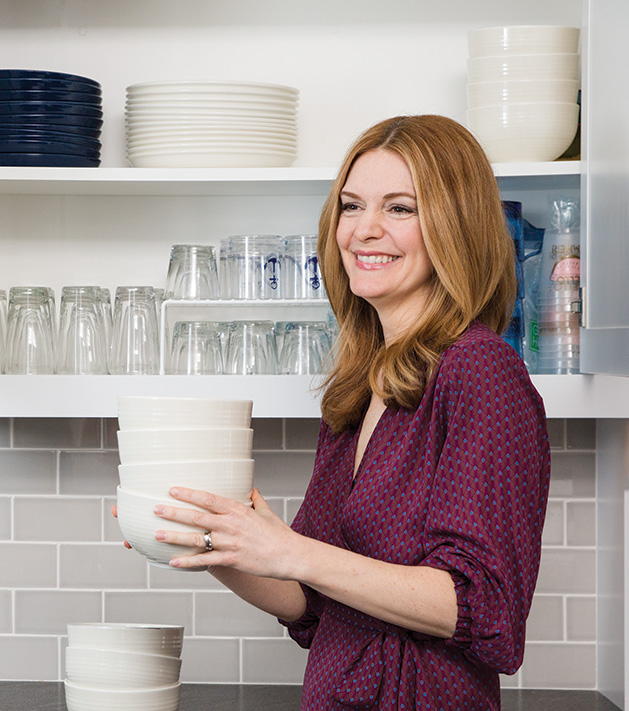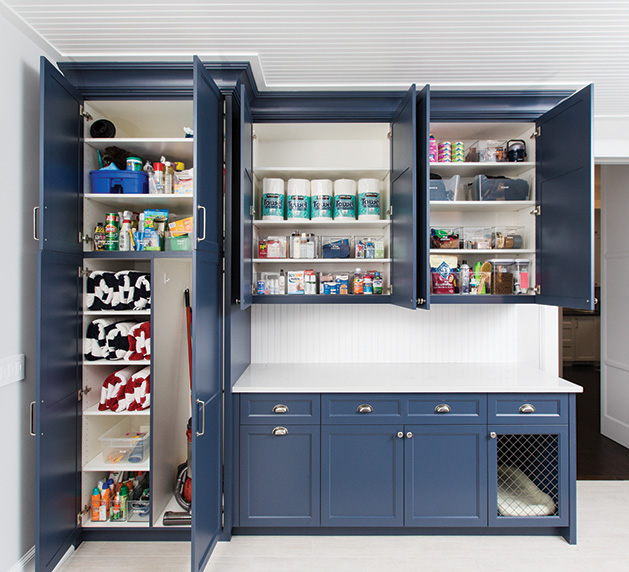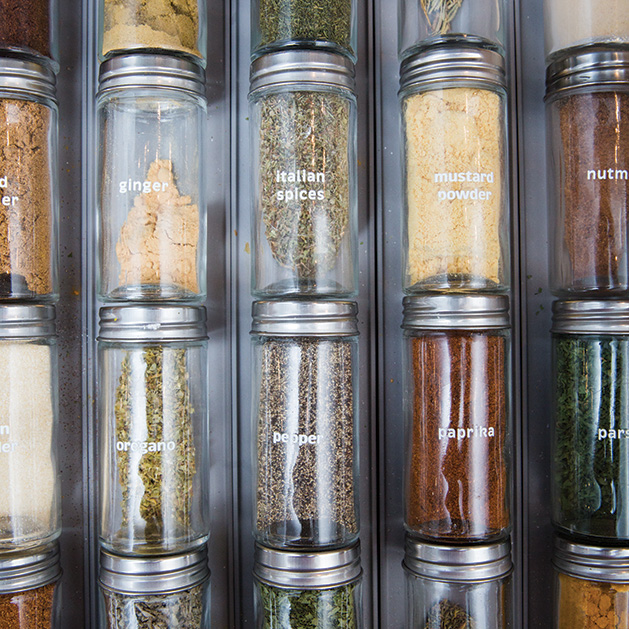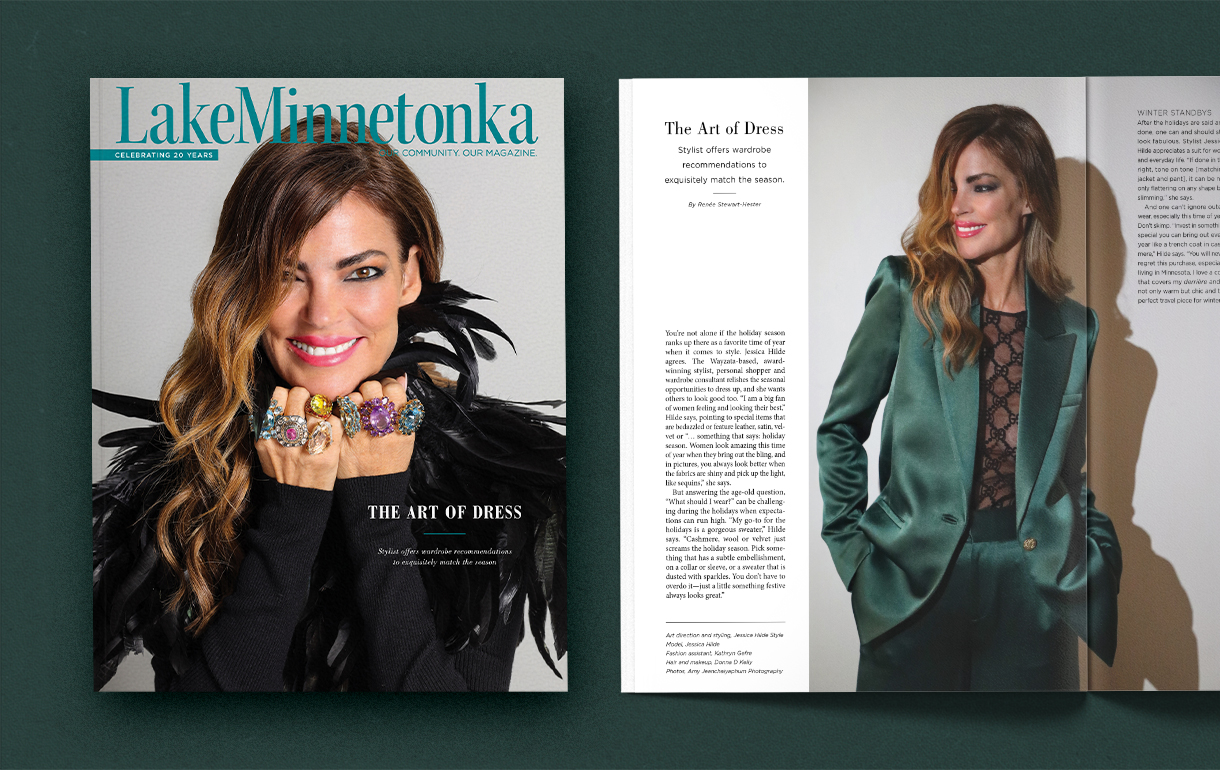
Photos: Rachel Nadeau
Former Caribou executive and KonMari-certified professional organizer Michele Vig shares her decluttering tips for a spring reset.
It was a corporate leadership exercise that first made Michele Vig realize her calling in life. And it had nothing to do with a corner office or more impressive title.
“I spent my entire career creating products, doing marketing and innovating for companies,” says Vig, a veteran executive who’s worked for Buffalo Wild Wings and helped Caribou Coffee navigate its merger with Einstein Bagels. “But we were doing this deep reflection, and I just kept thinking about organizing things … I realized I was the person my employers always pulled into projects that were messy, where things were stuck.”
“Messy” has becomes Vig’s specialty, and in 2014 she took a leap, launching a home and work organization blog and then full-fledged business, Neat Little Nest. “But organization isn’t the goal. It’s simplifying lives,” says Vig. She does flat-rate virtual, organizational consulting—sending clients step-by-step instructions for taking back their homes—or customizable sessions and systems based on specific client needs.

Amy Abouelenein, a General Mills vice president, contacted Michele after seeing a January 2018 feature about Neat Little Nest in the Star Tribune. With an upcoming marriage on the horizon and a new home build in progress on Lake Minnetonka, the mom of two wanted to declutter in a big way before hiring a moving truck to haul things she simply didn’t need.
Vig and Abouelenein went through Abouelenein’s closet—spending an entire Friday together—and then they tackled papers and books in advance of a June move.
“It really helped to see it all—to know exactly what I have,” says Abouelenein. “Hiring a professional organizer is like having a personal trainer. There’s an unbiased person there holding me accountable and pushing me farther than I would go by myself … Michele provided methods and structure and asked a lot of questions like, ‘what do you have,’ ‘what do you need,’ ‘how do you live’ and ‘what do you want from your life.’” Vig also designed organizational solutions for the new home—tweaking cabinets, tape measure in hand, and designing storage spaces and corresponding, labeled bins while construction was still in progress.

“I realized I had things in multiple places, and I had duplicates—I was wasting money without even knowing it,” says Abouelenein, who now only shops when she’s absolutely sure she’s running low on an essential item. Before, bags of chips would go stale at the back of a pantry, and long-lost tank tops got squashed at the bottom of drawers.
“Michele was also so great at helping me challenge my old habits—aligning my spaces with a modern ways of doing things,” says Abouelenein, who got rid of entire file folders of recipes torn from magazines—realizing that when it came down to it, she’d just Google anyway. And now she has an efficient two-slot mail management station, with spots for anything that “Needs Attention” or should be filed. Incoming mail and school papers are either recycled immediately or dealt with on Sunday mornings, when Abouelenein religiously gets to the bottom of her stacks.
From a baking station for her daughter’s growing home business to storage and methods for dealing with other belongings, everything Abouelenein learned from working with Neat Little Nest has underscored one principle for her busy life: “When you have less stuff, you truly have a clearer mind,” she says.
With that mantra in mind, Vig shares a few of the main principles she uses with clients who want to declutter, both mentally and spatially.

Declutter first, organize second.
Vig’s approach stems from the realization that clutter causes chaos—and that many people spend far too much valuable time moving, cleaning, organizing and locating their things—and ultimately, they feel guilt and stress about the amount of stuff they live with. “I come to a lot of houses with a lot of bins,” she says. Often, it’s not just disorganization, but a sheer quantity of belongings that paralyze clients. She uses the KonMari Method of decluttering, helping clients quantify exactly how much excess they’re living with. “I tell them, ‘We’re not doing a closet. We’re doing clothes. And yes, I want all of it on the bed.’ Then I don’t have to say anything. Usually they see the excess instantly and begin to let go,” she says.
Ask, “What do you love?”
“We don’t talk about what people are going to get rid of—that’s just not the way to do it,” Vig says. Instead she walks clients through categories of like belongings, asking them to gather all the shoes or clothes or papers or plates in the whole house. Seeing things all together—and realizing exactly how much people have accumulated—often helps them select their favorites to keep and enjoy.
Set organizational limits.
Once you’ve narrowed down what you want to keep, define optimal storage spaces for each kind of item. Many times, says Vig, people overbuy because they don’t have a set spot for toilet paper or makeup or snacks. Once you have set parameters for how much space you can and want to dedicate to each category of belongings, it’s easier to know when you’re running low and how much to restock—and it’ll also
save you from overspending.
Reframe gifting.
“In our conversations, moms come up a lot,” Vig says. Guilt creeps in when items become associated with the people they came from. “I help people realize that the act of giving a gift was the gift,” she says. She helps clients address the grief or dysfunction that might be at the root of clutter—and then set clear expectations and boundaries for loved ones moving forward.
Do a “Focused Fifteen.”
Vig’s own family—including kids—has learned that everything has a place. That consistency brings better habits and clarity for all involved. “Don’t put it down. Put it away,” is a saying Vig and her family live by. And when things get messy, the whole family takes 15 minutes to move through the house, putting things back in their designated spots.
Focus on yourself first.
Vig says she’s observed many marriages where one partner wants to declutter, but not the other. She says that so far, she’s primarily been hired by moms, whom she calls “the captains of the ship,” and she encourages them to take care of themselves and their own belongings first. She says, “Organizing is definitely contagious. And my ultimate goal is for people—for families—to develop sustainable processes and never have to call me again!”

Neat Little Nest
Facebook: Neat Little Nest, LLC
Twitter: @neatlittlenest
Instagram: @neatlittlenest
Youtube: Neat Little Nest – Michele Vig






















